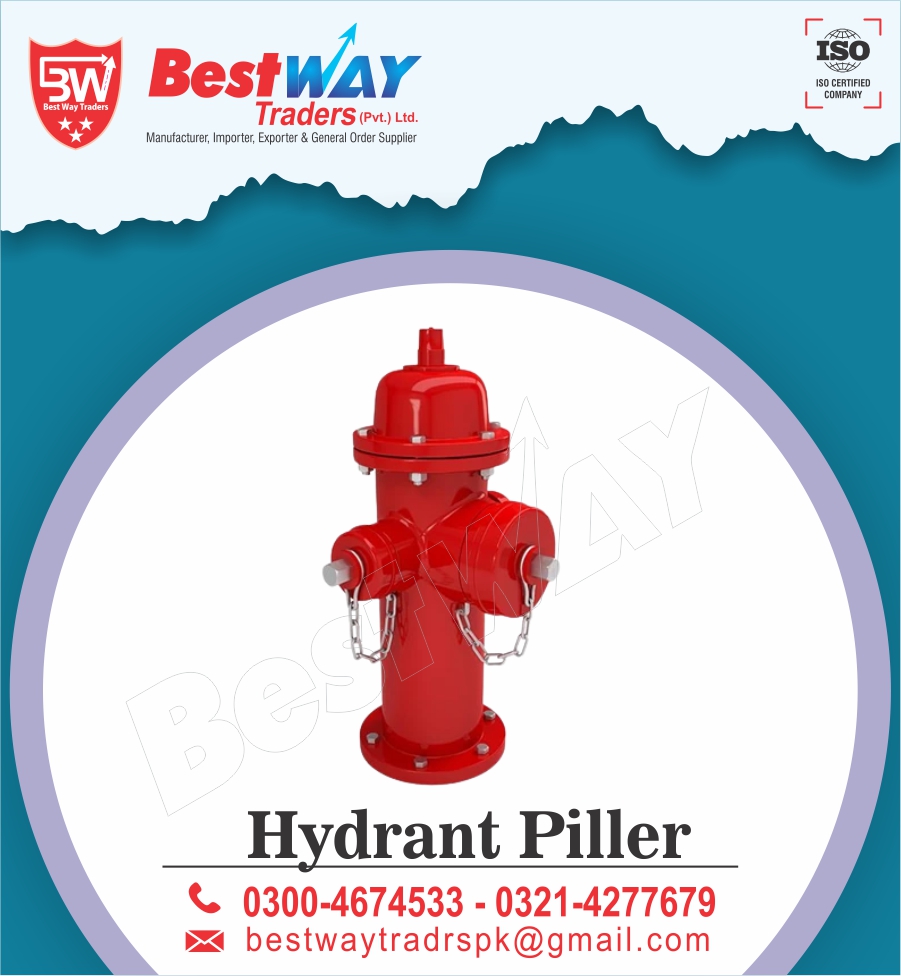Description: Being one of the oldest but yet the most effective and common fire fighting solution, a well designed and a well laid out Hydrant System forms the backbone of the entire fire fighting system. It comprises of heavy duty above & underground piping with accessories. External and Fire Escape Hydrant valves are provided at every strategic location. A fire hydrant is a pipe that allows water to flow from a water Line with the control of a valve in order to put out a fire.Hydrant Piller
Fire Hydrant Protection System is designed to fight fire of huge proportions, in all classes of risks. It is designed to be in operation even if a part of the affected structure collapses.
Dry barrel and wet barrel are the two kinds of Hydrant Piller The wet barrel fire hydrant holds a constant water supply, while the dry barrel fire hydrant needs to have a valve release to let water in.
It is designed to provide rapid access to water in the event that a fire breaks out. Fire Brigade Connections are installed as standalone systems which act like building-specific fire hydrants, providing fire protection which will be readily available to fire fighters.

Guidelines and approval for Hydrant System are available from various national and international organizations like: NBC, Hydrant Piller IS, FM and Local Fire Authorities.
Components of the System
• Fire Fighting Pumps & Accessories
• Piping
• Panels
• Landing Valves
• Hoses
• Couplings
• Hose Reel
• Branch Pipes & Nozzles
• Fire Brigade Connections
• Wiring & Instrumentations
• Maintenance Valves
Operational Information
Fire hydrant installation consists of a system of pipe work connected directly to the water supply main to provide water to each and every hydrant outlet and is intended to provide water for the firemen to fight a fire. The water is discharged into the fire engine form which it is then pumped and sprayed over fire. Where the water supply is not reliable or inadequate, hydrant pumps should be provided to pressurize the fire mains.
The Fire Pump Station comprises of the Jockey Pump, Electric Driven Pump and Stand-by Diesel driven Pump. The pump operation is automatic through pressure switch contacts based on header Pressure in the hydrant network. The delivery of the jockey pump and main pump is connected to the common delivery header.
The Fire Hydrant Line is always kept pressurized with water. In the event of any minor pressure drop in the system, the pressure reaches the preset pressure setting for Jockey pump, the Jockey pump will start automatically to compensate the pressure differential. In the event of opening one or more hydrant valve for fighting fire the Jockey pump will not be able to make up this water loss resulting in further pressure drop. When the falling pressure reaches the Preset pressure for main pump, the main pump will start automatically. In case of electric supply failure, stand by diesel engine driven pump will come into operation.
Above-ground hydrant – advice, installation & maintenance
An above-ground hydrant is a permanently installed above-ground fitting for the extraction of fire-fighting water. The surface hydrant has several outlets (A, B or C) based on several couplings and is only used by the fire brigade. CWS offers different variants of above-ground hydrants, e.g. with or without predetermined breaking point and drop-jacket hydrant (nominal diameters DN 80 and DN 100, component operating pressure 16 bar).
Pillar hydrants are available with the following connections:
Flange connection
Sleeve connection
Tip end connectionOperation of above-ground hydrants
When installing and operating above-ground hydrants, the regulations of DIN 14462 and the Drinking Water Ordinance apply. Direct connection to the drinking water installation is not permitted in every case. In addition, maintenance of the surface hydrant by a competent person is required at least once a year.
All-round carefree package: CWS Fire Safety offers you an all-round carefree package, i.e. installation, acceptance and maintenance of the above-ground hydrants. With a maintenance contract from CWS, we automatically take care of the necessary maintenance – so the deadlines are not forgotten.
We will be happy to advise you on all questions relating to drinking water protection in connection with above-ground hydrants. Contact us now.
Fire hydrants serve as an essential part of the firefighting process, as they allow firefighters to access a steady flow of water supply during operation. With a fire hydrant system, an obvious function is a need for a consistent water supply. If water is used up during a situation, there should be a system in place that automatically refills the supply.
